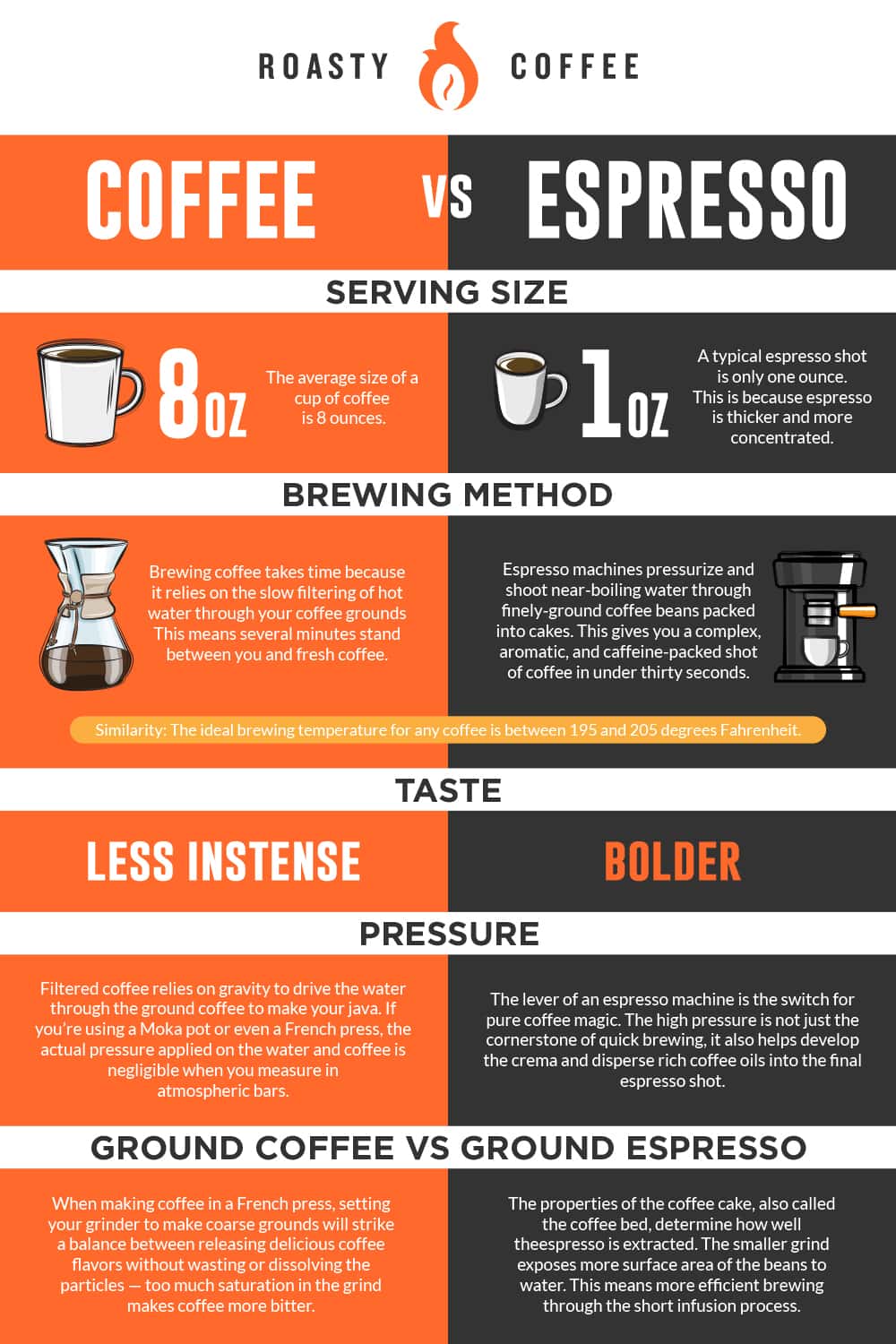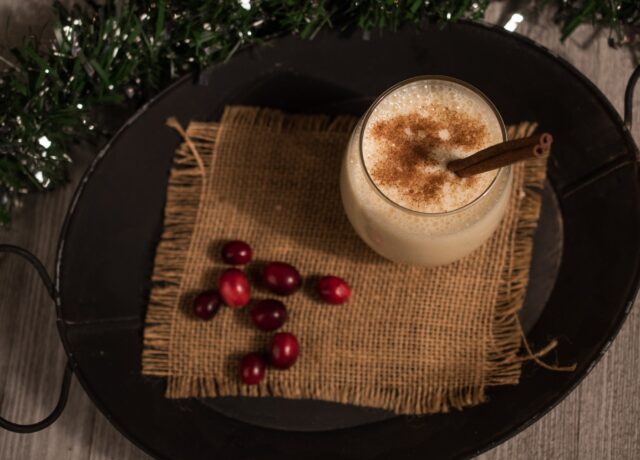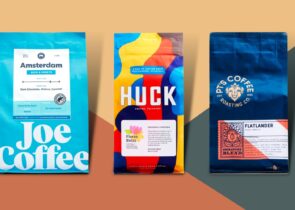Some questions may feel embarrassing to ask. Yes, you’re a coffee aficionado, but you may have learned a term before fully understanding the meaning behind it. There’s no harm in that, and we’re here to tell you there are no embarrassing questions when it comes to coffee.
One of these questions you may be hesitating to ask is actually a pretty common one. The difference between coffee and espresso can be a confusing one for some people, and that’s okay. We’re here to give you all the answers to the burning question: what’s the difference between espresso and coffee?

Wait, Isn’t Espresso Coffee?
Yes! Because coffee is the liquid extracted from the bean, not the method of preparation, it is technically considered coffee. You can get a good cup of espresso through a specific preparation of robusta or arabica coffee beans.
Think about all the different ways you prepare coffee. There’s French press coffee, pour-over coffee, stovetop percolator coffee, and more. So all espresso is coffee, but not all coffee is espresso.
Espresso isn’t a different coffee bean, although roasters may have a special process for beans destined to become espresso. In fact, roasters may prefer to use high-quality robusta beans to add an extra kick of caffeine, and typically, espresso beans are roasted longer and darker than those intended for drip coffee.
So, does that mean you can use espresso beans for coffee? And can you make espresso with regular coffee beans? Yes. You can make espresso with regular coffee beans so long as you grind them finely, and for better-flavored results, be sure to use a dark roast. And with a coarser grind, your “espresso beans” will do just fine in your drip coffee maker.
Every Big Difference Between Coffee and Espresso

Brewing Method
What’s the difference between espresso and coffee? When it comes down to it, espresso’s brewing method is what really sets it apart. Other methods of brewing take time because they rely on the slow filtering of hot water through your coffee grounds. This means several minutes stand between you and fresh coffee.
Espresso machines pressurize and shoot near-boiling water through finely-ground coffee beans packed into cakes. This method of making espresso gives you a complex, aromatic, and caffeine-packed shot of coffee in under thirty seconds.
Of course, you don’t need a fancy machine. It just makes preparation easier and more accurate. So nothing is stopping you from learning how to make espresso without an espresso machine. Just remember it means extra work for you!
Despite differences in pressure between brewing methods for coffee and espresso, they share one very important similarity: brewing temperature. The ideal brewing temperature for any coffee is between 195 and 205 degrees Fahrenheit.
Anything lower and the flavor extraction suffers, producing a lackluster beverage. Any temperature higher, however, and extraction is the least of your worries, as your coffee or espresso is more than likely burned.
Taste
Your next question is probably “does espresso taste different than coffee?”, and to that, we say it’s worth noting that espresso and coffee actually do taste a bit different.
A shot of espresso tends to boast a bolder flavor than a mug of drip brew. This is probably because it’s not made with a filter, so none of the flavor-filled oils are lost. Drip coffee, on the other hand, is less intense.
Pressure
The lever of an espresso machine is the switch for pure coffee magic. The high pressure is not just the cornerstone of quick brewing, it also helps develop the crema and disperse rich coffee oils into the final espresso shot.
Filtered coffee relies on gravity to drive the water through the ground coffee to make your java. If you’re using a Moka pot or even a French press, the actual pressure applied on the water and coffee is negligible when you measure in atmospheric bars.
Many espresso machines default to nine bars, which is roughly equivalent to 130 pounds per square inch (PSI). To put that figure in perspective, you would need to dive nearly 300 feet deep in the ocean to experience optimal espresso pressure.
It’s a ton of pressure and explains why espresso brews so strongly so quickly.
Ground Coffee vs Ground Espresso
After pressure, the size of the coffee grounds is paramount. We generally recommend fresh, medium-ground beans when brewing your coffee with a drip filter or percolator.
When making coffee in a French press, setting your grinder to make coarse grounds will strike a balance between releasing delicious coffee flavors without wasting or dissolving the particles — too much saturation in the grind makes coffee more bitter.
But espresso is different. The properties of the coffee cake, also called the coffee bed, determine how well the espresso is extracted. The smaller grind exposes more surface area of the beans to water. This means more efficient brewing through the short infusion process.
Of course, grounds that are too fine can clog or slow the brew. That’s because the coffee bed swells when it’s exposed to water, thanks to pressure and insoluble sugar-based carbohydrates developed during the roast.
So it’s a fine balance between small and medium grounds when you’re brewing espresso.
Serving Size
Another difference between espresso and coffee shows up in the serving size. The average size of a cup of coffee is 8 ounces, but a typical espresso shot is only one ounce. This is because espresso is thicker and more concentrated than regular brewed coffee, so with such a bold taste, less is definitely more.
Anatomy of an Espresso Shot
If you’re Italian or have spent time at an espresso bar (yes, they exist!), you know what an espresso shot looks like.
Traditionally, this dark brew is served in an unassuming China cup that can fit barely 50 milliliters (about 1.6 ounces). Properly prepared, it’s topped with a thick layer of brown, bubbly crema, or the holy grail of coffee foam.
The Crema
This delightful foam is the primary visual indicator of a well-extracted shot of espresso. When pressurized water is forced into the coffee cake, several reactions are thought to happen:
- More delicate coffee oils blend with the hot water.
- The exposure to pressure degasses the bean, which means carbon dioxide trapped from the roasting process escapes.
- Bicarbonate ions in the water undergo a chemical reaction from the sudden exposure to an evolving pH of the coffee cake.
- The sudden change from a high-pressure environment (the machine) to a low-pressure environment (the cup) allows the carbon dioxide to break through the espresso cell walls and bubble.
All these forces come together to create the top layer of the espresso shot. Generally, the crema can hang around for about 40 minutes — assuming your shot lasts that long. After all, espresso is Italian for expressed, as in this espresso was made for the express purpose of you drinking it immediately after brewing.
The Espresso
When brewed properly, the actual espresso under the crema will have a unique, rich taste, velvety mouthfeel, and aromatic scent. The shorter period of water exposure draws out less acid than other brewing methods while still retaining 60 to 70 percent of the caffeine in the final cup.
So even though it takes only 30 seconds to brew with an espresso machine, it still provides a significant amount of caffeine. The process also preserves more volatile and aromatic coffee oils that you won’t find in your regular cup of coffee.
Find out all the basics of brewing espresso with the espresso theory!
Where to Find Good Espresso
If everything we’ve talked about so far regarding espresso appeals to you, you might be wondering how you can get your hands on a good bag of beans that’s perfect for espresso.
Atlas Coffee

Atlas Coffee Club
A coffee of the month club that curates amazing micro-lot coffees from around the world.Tanzania, Kenya, Colombia & beyond.
A great place to find what you may be looking for, and one of our top recommendations, is Atlas Coffee Club. This coffee company is one that allows you to explore many different options that work perfectly for espresso from many different countries. Their huge variety of beans gives you the chance to try a vast collection of coffee.
Moreover, every batch from Atlas is roasted perfectly for espresso. Also, the grind options that the coffee company provides vary from espresso to pour-over, to French press, to cold brew, to Aeropress, and drip. The choices are nearly limitless when it comes to Atlas Coffee Club, which makes them a great choice for getting coffee that’s perfect for espresso.
Is Espresso Bad For You?
The short answer is no. Espresso, like black coffee, actually has a lot more health benefits than disadvantages. At a pretty basic level, espresso is high in antioxidants and low in calories, which present some pretty obvious benefits.
However, one of the biggest, most obvious perks of drinking espresso is actually what’s considered its biggest drawback: the caffeine. While caffeine is responsible for the highly sought-after energy boost, there is actually a limit to how much you should be drinking.
What Are the Benefits of Espresso?
Espresso is not only good for making your favorite coffee drinks, but it just might be good for you, too, boasting some rather impressive health benefits.
Studies have shown espresso improves long-term memory, concentration, and mood, and it’s also been suggested that espresso can reduce your risk of stroke and type 2 diabetes.
Furthermore, some people actually use espresso to boost their workout performance. So it’s safe to say this drink isn’t exactly ruining people’s health.
In comparison to the average cup of drip coffee, some might consider espresso to be the healthier choice because brewing it requires no filter, meaning espresso contains more natural nutrients than a cup of drip. Consuming too many of these natural oils has been linked to high cholesterol, though, so consider monitoring your unfiltered coffee consumption.
What is Espresso’s Acidity Level?
More good news for espresso drinkers: espresso is notorious for its low acidity. This is because the longer coffee beans are roasted, the more their chlorogenic acids are decomposed. So, any dark roasted coffee bean, like one intended for espresso, will boast a lower acidity than a light or medium roast.
How Much Caffeine Is In a Shot of Espresso?
Though acidity may be the first thing on some coffee drinkers’ minds, concerns about caffeine intake top the list for others. While just one double shot isn’t going to severely impact most people’s health, too much of it may. Caffeine is known to cause insomnia and increase the symptoms of anxiety. Additionally, excessive caffeine can lead to high blood pressure.
On the bright side, espresso actually only has about 60 milligrams of caffeine per ounce (or single shot), which is less than a quarter of the total recommended daily intake. Compare that to the 95 milligrams in every 8 ounces of coffee (most people drink 12 ounces), and you’ll see that you’re actually getting less caffeine than the morning drip coffee crew.
To be clear, espresso has a higher concentration of caffeine, but given that you’re only getting a couple of ounces of it, it’ll typically contain a lower amount of caffeine overall compared to a full cup of drip coffee.
So while chugging 5-7 shots of espresso might get your heart in a tizzy, consuming espresso responsibly will likely help you more than it hurts you. However, as always, you should be conscious of how your body reacts to substances like caffeine and consume or abstain from it accordingly.
Espresso Calories vs. Coffee Calories
When it comes to the calories of espresso versus coffee, it entirely depends on how much you consume. Because espresso is more concentrated than a cup of coffee, it does come with more calories.
So, if you’re looking at an eight-ounce amount of both, a cup of black coffee would be about two calories while the same amount of espresso would be about twenty calories.
Now, if you’re looking at how you’d normally consume espresso, in shots, one shot equates to about one ounce. So, one ounce of espresso is about two calories. It all really depends on the amounts you drink your coffee or espresso in and what you add to it.
Which Has More Antioxidants?
While coffee in general is very high in antioxidants, due to the difference in grinding and brewing when it comes to espresso versus regular coffee, espresso has a bit more antioxidants.
Since espresso is more concentrated and the oils and minerals in coffee beans don’t get filtered out as much as they do in a normal cup of black coffee, the antioxidants are more present in a shot of espresso.
How to Drink Espresso
Let’s start with ordering the espresso. If you ask for an espresso at your local shop, chances are you’re actually going to be served a double shot, or doppio, by default. However, some shops will ask if you want a single or double. If it’s the only coffee you’re drinking today, go for a double.
Regardless of which you go for, your espresso should come out in a ceramic demitasse cup. Also, it will probably be served with water. If not, it’s a good idea to get some to cleanse your palate for the delicious espresso you’re about to drink.
Now, we’re onto the crema. You have a couple of different options here. Some people choose to skim the tan foam off to avoid its rather acidic flavor. However, other people choose to simply stir it in before drinking.
Speaking of stirring, you should probably do that anyway. The thicker, syrupy bits will often sink to the bottom, leaving lighter and brighter flavors up top. Therefore, if you want a more balanced cup, give it a nice little stir.
Now it’s time to drink! The biggest thing is to not take it like a shot of alcohol. Instead, sip this drink slowly. Pay attention to the flavor profile, the aroma, and the aftertaste, and make sure you’re really getting the most out of the experience. Above all, make sure to enjoy yourself.
Becoming an Espresso Connoisseur
If you’re really interested in the culture and flavors of espresso, there’s no substitute for a barista who knows what they’re doing. Brewing espresso is as much of an art as it is a science, even with machines that can accurately apply pressure to perfectly heated water.
You can achieve great espresso at home, but it’s always nice to know what you’re aiming for. So you should visit your local coffee shop or a skilled barista to experience the difference a practiced espresso brewer makes.
Aside from a straight shot, several coffee styles rely on the addition of espresso. Most of them are Italian — which is no surprise since it’s the birthplace of the espresso machine.
Types of Espresso Shots
In addition to your regular, or Solo, shot, baristas throughout the twentieth century developed other, often more caffeinated ways, of serving brewed espresso.
- Doppio: Basically a double shot, this drink contains 60 milliliters — or two ounces — of espresso.
- Ristretto: This drink isn’t a triple shot as the name might suggest. It’s made up of concentrated espresso weighing just under an ounce.
- Lungo: Like doppio, this drink contains two ounces of espresso. But unlike the doppio, it’s more concentrated.
- Macchiato: It’s not the giant coffeehouse drink you may be picturing. The classic version is two ounces of brewed espresso with a dash of foamed milk.
- Café Noisette: This double shot is a blend of two ounces of espresso and an ounce of steamed milk.
Chain coffee shops may offer you other versions of these espresso drinks, but these are the classic ways to experience this delicious coffee.
Espresso Your Love for Coffee
There’s nothing quite like living a century-old coffee tradition. Now that you know the big difference between espresso vs. coffee, you’re ready to dive into the rich and wonderful varieties of this specialty brew.
Go out and explore your local espresso offerings, and if you’re lucky, you’ll find an Italian-style espresso bar near you. If nothing’s around, maybe now is the time to start experimenting to find a perfect espresso brewing method of your own.
Happy Caffeinating!











